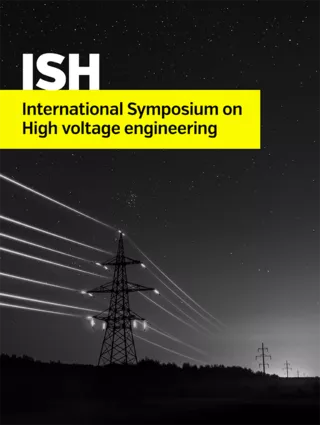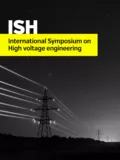Summary
An experimental study of discharges in air at atmospheric pressure under impulse voltage, either creeping on an insulating solid surface or in air alone is presented. The objective is to get a better understanding of creeping discharge by studying streamer initiation and propagation, and by looking at the influence of the solid on transient current measurements and discharge shapes. A dry composite material is investigated: the epoxy resin and anhydride hardener matrix filled with silica. Pre-breakdown streamers are investigated by high speed visualization with a gated image intensifier. Measurements are carried out in a 5 cm gap, with a high voltage electrode constituted by a rounded rod with 0.5 mm radius of curvature. Current flowing through the point at high voltage is measured via a 5 O resistor located in the tip holder, and sent to the oscilloscope via a 100 MHz analog optical fiber link. In air without solid, streamer appear at the maximum voltage and propagate up to the ground electrode. At low voltage, streamer propagation up to the plane does not induce breakdown, and it is necessary to further increase the voltage to observe the transition from the streamer to the breakdown spark. Oscilloscope recordings show a random time delay (up to 100 µs) between the voltage application and the appearance of the streamer. The conditions for discharge inception require both a high enough field, and the presence of charges (electrons) in the high field region. In this case, the random presence of charges leads to the statistical inception delay measured. In comparison, in the presence of the epoxy/silica surface touching the point (thus creating a gas/metal/insulating solid triple junction), the first streamers observed creep along the insulating surface. They appear at much lower voltage (during voltage rise), and their inception delay time is accordingly strongly reduced (some hundreds ns), and much less scattered compared to air alone. These results tend to show that the presence of an insulating solid surface in the triple junction region greatly favours streamer initiation, by providing charges able to trigger streamers at low voltage. Once triggered, these streamers are able to propagate up to the plane electrode at comparatively lower voltage, by creeping along the solid surface. Afterwards, streamers continue to propagate along the surface but also in the air above the surface. At high voltage, breakdown occurs from these volume streamers (in the air). They resemble those observed in air alone, although the presence of the solid modifies both their inception and propagation.
Additional informations
| Publication type | ISH Collection |
|---|---|
| Reference | ISH2017_313 |
| Publication year | |
| Publisher | ISH |
| File size | 216 KB |
| Pages number | 6 |
| Price for non member | Free |
| Price for member | Free |




